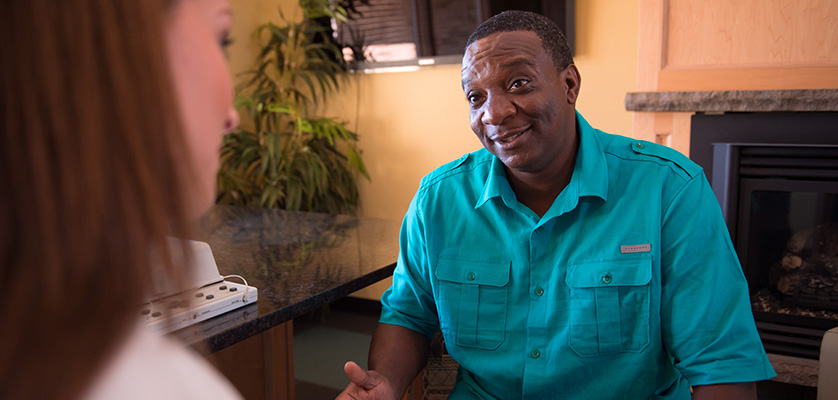
OSHA
To protect workers with significant occupational noise exposures from hearing impairment.

Hearing loss and counselling
We have been providing hearing conservation services to businesses in the greater Long Island region for over 40 years. To protect your company's interests and those of your employees, testing is carried out by our experienced New York State licensed audiologists in accordance with OSHA requirements. We use sound-treated test booths and calibrated audiometers to conduct testing at your location or at our Huntington facility. We provide detailed reports for your company and it's employees.
If you work in an industrial setting, you may be exposed to high levels of noise that can damage your hearing. According to the Occupational Safety and Health Administration (OSHA), 22 million workers are exposed to potentially damaging noise at work each year. Exposure to loud noise can cause permanent hearing loss that cannot be corrected by surgery or medicine. It can also affect your ability to communicate and perform your job effectively.
To protect your hearing and prevent occupational hearing loss, you need to follow a hearing conservation program that meets the OSHA requirements. A hearing conservation program is a set of measures that employers must implement when noise exposure is at or above 85 decibels averaged over 8 working hours, or an 8-hour time-weighted average (TWA). A hearing conservation program consists of the following elements:
- Noise monitoring: Employers must measure the noise levels in the workplace using sound level meters, noise dosimeters, or octave band analyzers. They must also inform workers of their noise exposure levels and provide them access to the monitoring results.
- Audiometric testing: Employers must provide free annual hearing exams for workers who are exposed to noise levels above the action level of 85 dBA TWA. The exams must be conducted by a licensed or certified audiologist, otolaryngologist, or other qualified professional. The exams must include a baseline test and annual tests to detect any changes in hearing. Workers must also be notified of any hearing loss and referred for further evaluation or treatment if needed.
- Hearing protection devices: Employers must provide workers with a variety of suitable hearing protectors, such as earplugs or earmuffs, and ensure that they are worn correctly and consistently. Workers must be trained on how to select, fit, use, and care for their hearing protectors. Employers must also evaluate the effectiveness of the hearing protectors in reducing noise exposure.
- Training and education: Employers must provide workers with training and education on the effects of noise on hearing, the purpose and benefits of hearing conservation programs, the use and maintenance of hearing protectors, and the results and implications of audiometric testing. The training must be updated annually and whenever changes occur in the workplace that affect noise exposure or hearing protection.
- Recordkeeping: Employers must keep records of noise exposure measurements, audiometric test results, hearing protector attenuation data, and worker training. The records must be maintained for at least two years for noise exposure measurements and for the duration of employment for audiometric test results.
By following these steps, you can ensure that your hearing conservation program is OSHA compliant and effective in preventing occupational hearing loss. Remember, hearing loss is preventable but not reversible. Protect your hearing today and enjoy it for a lifetime.
Schedule your consultation at our Huntington office or to find out more about hearing tests, contact us at
(631) 271-6263.
